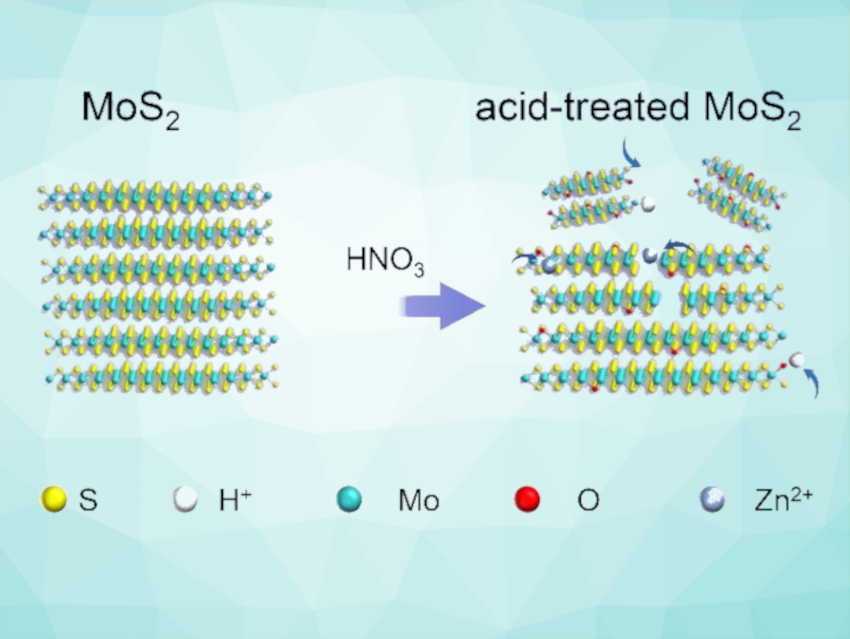Rechargeable aqueous zinc-ion batteries (AZIBs) have attracted the interest of researchers due to their low cost, safety, and environmental friendliness. The selection of a cathode material with suitable ion transport channels and zinc storage sites is crucial for improving the electrochemical performance of AZIBs. Molybdenum disulfide (MoS2), for example, can have advantages such as adjustable two-dimensional ion transport channels and layer spacing, and thus, could be a good candidate. However, the electrochemically active edge sites in MoS2 are limited. One strategy for tackling this drawback is to expose more active edge sites of MoS2.
Zhiqiang Zhu, Hunan University, China, and colleagues have developed an edge-enriched MoS2 cathode material with abundant zinc storage sites and fast reaction kinetics. To achieve this, the team used HNO3 as a corrosion agent. The team first synthesized pristine MoS2 nanosheets via a hydrothermal reaction. Different edge–enriched MoS2 samples were then created by treating the pristine MoS2 with nitric acid solutions with different concentrations. The strong oxidizing properties of HNO3 lead to corrosion of the inert basal surface of MoS2 and the introduction of oxygen atoms.
This treatment effectively increased the total number of active sites for zinc storage and shortened the migration path of Zn2+ ions. An optimized edge-enriched MoS2 cathode with balanced edge exposure and structural stability exhibited a superior specific capacity of 187 mAh g−1 at 0.1 A g−1 and showed long-term cycle stability, with 89 % capacity retention after 700 cycles at 1 A g−1.
- Edge‐enriched MoS2 as a high‐performance cathode for aqueous Zn‐ion batteries,
Mengfan Niu, Falian Wan, Wenli Xin, Lei Zhang, Xilin Xiao, Hui Zhang, Zichao Yan, Zhiqiang Zhu,
Batter. Supercaps 2024.
https://doi.org/10.1002/batt.202400419


